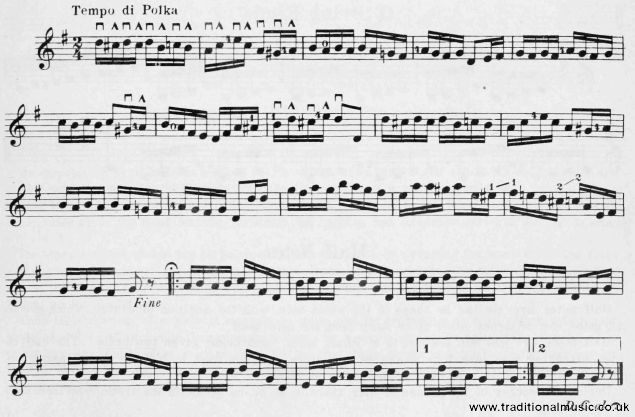Mandolin Self Instructor, online tutorial - Page 39
A simplified self learning system for the Mandolin with tuning instruction, song folio, chord diagrams, sheet music and PDF for printing. By ZARH MYRON BICKFORD
| Share page | Visit Us On FB |
|
Hasta La Manana! (man-yah-na)
This little Polka illustrates a more extended use of Accidentals, as well as of the fourth finger.
The cancel in the third measure is cautionary rather than necessary, as are those in several oth- er measures. That in the first measure, however, is necessary, as the second C is natural. The let- ters "D. C." at the end represent the Italian words Da Capo-(from the beginning-,) and indicate that the player is to return to the beg-inning- of the piece and play as far as the sig-n  placed over placed overthe double bar. This sign is called a HOLD when it is placed over a double bar or a note, and a PAUSE when it is placed over a rest. Its use over the double bar is to indicate the end or close of the composition, this also being indicated by the word FINE. Either one or both may be used, at the discretion of the composer.  thus means to play from the beginning to the Hold or Fine. thus means to play from the beginning to the Hold or Fine.The two measures at the end in brackets are "endings'/ the first being- played when the strain is
played the first time, but the second only, when the strain is repeated. This is indicated by the figures in the brackets. (The proper pronunciation of the foreign words used in music is g-iven in the Dictionary of Musical Terms at the end of the book, and it is suggested that the stud- ent pay careful attention to this feature, since mis-pronounced Musical Terms are-at the very least-not a sign of erudition!) (Special Note- This may be studied at a later period at the descretion of the teacher.) |
||
 |
||